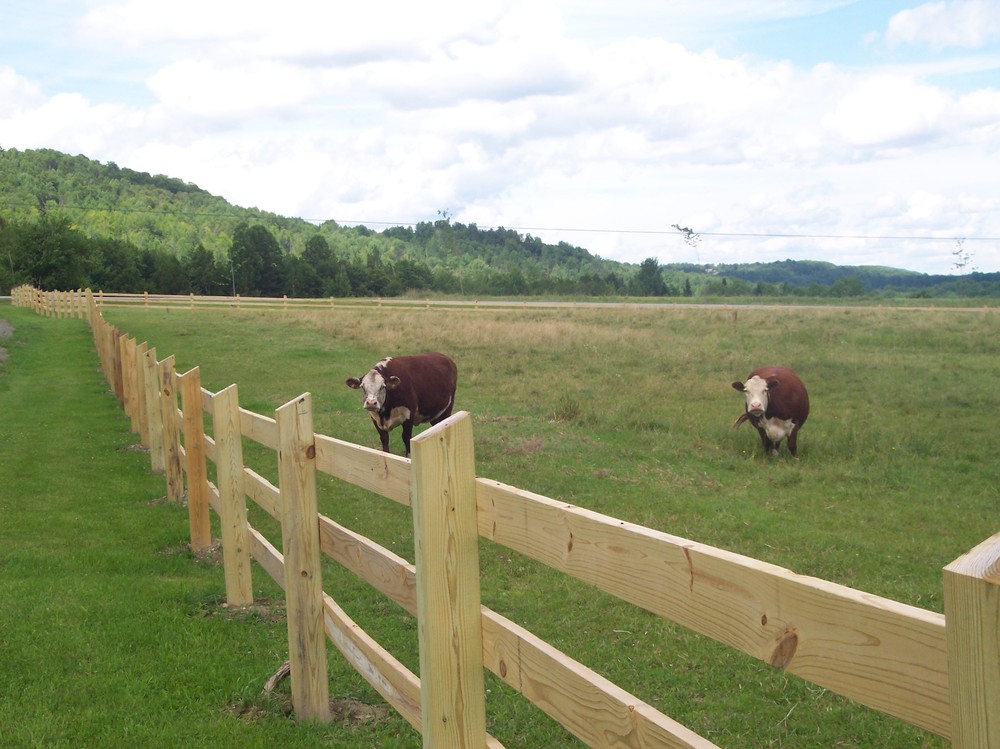Cattle fencing is an old practice to ensure your cattle do not wander astray nor do the wild animals lurk too close to the grazing land and prey on cattle.
Before tackling all the issues, here are some questions to give you a direction. As we plan for 2022, the nature of your fence will influence a tremendous part in the accomplishment of the latest grazing season for your cattle.
In this post, we will share seven top cattle fencing errors that owners commit. By identifying the issues, you will be more able to get more from your fencing endeavors.
1. Erecting Steel Posts Everywhere
It's a terrible error to put a steel post anyplace in an electric fence since you're depending on the insulator to protect your livestock fence from shorting out.
Posts are made of very flexible plastic or a wood-plastic combination. No matter how good an insulator you use, something will ultimately fail or pop off, exposing you to the risk of dead-shorting.
To lessen the impact, do the following:
- Make sure your ground rounds are spaced far enough apart.
- Create a wildlife-friendly livestock fence by making it flexible.
- It's difficult to design a gate system that carries current; instead, dig a trench and bury the fence.
- To avoid shorts, avoid using steel posts and instead utilize flexible plastic or composite posts.
2. A Wild-Life Friendly Fence
Rather than aiming for an elk and moose-proof barrier, a flexible fence is a better alternative. The fencing was high-tensile electric on T-posts when he came to Idaho from Missouri, but the T-posts were twisted and the insulators were broken off due to animals. He switched the T-posts for Power Flex fence posts and hasn't had any issues since.
Another option is to construct a low-profile fence. The top wire on typical 2-wire range fences is 30 inches tall, while the second wire is 20 inches tall. It's built low enough for antelope to go under the wires, but high enough for elk to hit the barrier with their legs rather than their biggest body portion.
3. Poor Earthing of Electrical Fence
According to the experts, the electric fence is 99 percent grounded. This rule of thumb is used by experienced livestock fencers: 3 feet of ground rods per joule of energizer output. So, if the fence uses a 6-joule energizer, you'll need 18 feet of ground rods. Three 6-foot ground rods, placed at least 10 feet apart, are typical.
Because a ground rod is effectively an antenna that receives electrons traveling through the soil and back to the energizer to complete the circuit, proper spacing is crucial. A given amount of soil can also interact with ground rods. Because of the volume of soil, they contact with, three ground rods pushed into the ground 6 inches apart effectively behave as one ground rod. Hire fence service for perfect installation of an electrical fence.
4. Inadequate Energizer Size
Regardless of the number of strands of wire, experts recommend 1 joule of output per mile of fence. A minimum of a 6-joule energizer is required for a total of six kilometers of fencing.
Others, on the other hand, advocate a low-impedance energizer with a low-amp fuse. The larger the energizer, the lower the voltage, because larger energizers are more likely to short out as the power through more vegetation. For an energizer, 7,000-8,000 volts are excessive.
5. Too-Stuffy Post Placement
Fencers utilize an excessive number of posts, which is likely due to people's experience with barbed wire, where the rule of thumb was one post per rod length (16.5 feet).
Cattle fencing pros recommend spacing fence posts 80-100 feet apart in an electric-fencing system or around 50 posts per mile. If posts are placed 100 feet apart, he recommends installing a "stay," which is a shorter post that stands on top of the ground and keeps wires up. Experts favor a 50–70-foot space between his fence posts.
6. Play With Corner Posts
This is the most common fencing blunder, whether it's barbed, high-tensile, or woven wire. Undersized posts and corner posts that aren't put deeply enough are the most common problems, especially in sandy or soft soils. "The depth in the ground should be equal to, or more than, the height of the top wire," according to a corporation with clients in 43 states.
The company's main focus is keeping corner posts in the ground. He recommends a "floating diagonal" bracing method, in which the angle brace is a 4-inch by 10-foot post notched a half-inch into the main corner post.
7. Reliance On Gates for Current Conduction
Creating a current-conducting gate system in an electric-fencing system is difficult. A floating diagonal bracing on either side of the gate opening is recommended by specialists.
Trench both insulated hot and cold galvanized wires 1-foot deep beneath the entrance to keep the fence "hot" (perhaps deeper in high-traffic areas or low-lying wet spots, or shallower in less-used pasture settings). You don't need the gate to carry the current since your current is traveling beneath the ground.
Fencing for cattle has evolved with new materials and techniques. But the goal remains the same, keeping cattle safe from predators in the wild. Through highlighting these errors, you will be able to make amends and ensure that your cattle are safe, either in the pen or while grazing. In order to avoid these errors find fencing contractors on Topspot 101.

